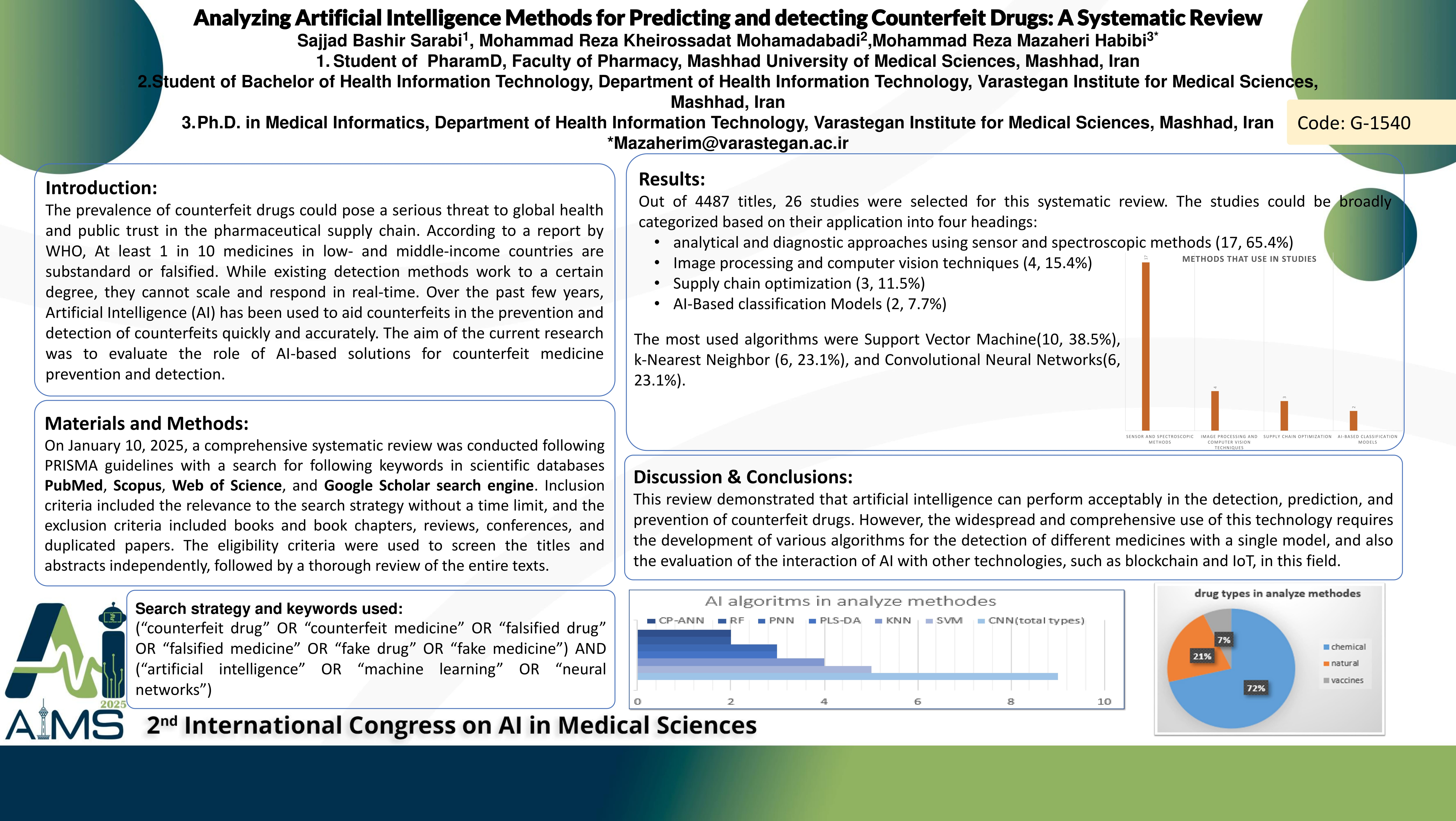بررسی روشهای هوش مصنوعی در پیشبینی و شناسایی داروهای تقلبی: یک مرور نظاممند
کد: G-1540
نویسندگان: Sajjad Bashir Sarabi ℗, Mohammad Reza Kheirossadat Mohammadabadi, Mohammad Reza Mazaheri Habibi *
زمان بندی: زمان بندی نشده!
برچسب: کشف و طراحی دارو
دانلود: دانلود پوستر
خلاصه مقاله:
خلاصه مقاله
Background and aims: The prevalence of counterfeit drugs could pose a serious threat to global health and public trust in the pharmaceutical supply chain. According to a report by WHO, At least 1 in 10 medicines in low- and middle-income countries are substandard or falsified. While existing detection methods work to a certain degree, they cannot scale and respond in real-time. Over the past few years, Artificial Intelligence (AI) has been used to aid counterfeits in the prevention and detection of counterfeits quickly and accurately. The aim of the current research was to evaluate the role of AI-based solutions for counterfeit medicine prevention and detection. Methods: On January 10, 2025, a comprehensive systematic review was conducted following PRISMA guidelines with a search for "counterfeit drug", "counterfeit medicine", "falsified drug", "falsified medicine", "fake drug", "fake medicine", "artificial intelligence", "machine learning" and "neural network" as keywords in scientific databases PubMed, Scopus, Web of Science, and Google Scholar search engine. Inclusion criteria included the relevance to the search strategy without a time limit, and the exclusion criteria included books and book chapters, reviews, conferences, and duplicated papers. The eligibility criteria were used to screen the titles and abstracts independently, followed by a thorough review of the entire texts. Results: Out of 4487 titles, 26 studies were selected for this systematic review. The studies could be broadly categorized based on their application into four headings: Advanced analytical and diagnostic approaches using sensor and spectroscopic methods (16, 64%) Image processing and computer vision techniques (4, 16%); Supply chain optimization (3, 12%); and AI-Based classification Models (2, 8%). The most used algorithms were Support Vector Machine (10, 38.5%), K-Nearest Neighbor (6, 23.1%), and Convolutional Neural Networks (6, 23.1%). Conclusion: This review demonstrated that artificial intelligence can perform acceptably in the detection, prediction, and prevention of counterfeit drugs. However, the widespread and comprehensive use of this technology requires the development of various algorithms for the detection of different medicines with a single model, and also the evaluation of the interaction of AI with other technologies, such as blockchain and IoT, in this field.
کلمات کلیدی
Artificial_Intelligence, Counterfeit_Drugs, Machine_Learning, Neural_Network
